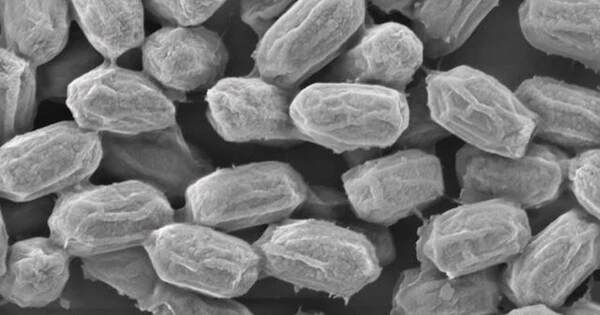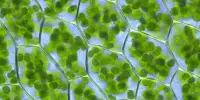Water molecules are important in defining the materials and substances that surround us. Water can interact with various substances, causing changes in their physical and chemical properties, due to its unique properties.
According to a new paper, materials such as wood, bacteria, and fungi belong to a newly identified class of matter known as ‘hydration solids.’ The new findings stem from ongoing research into the peculiar behavior of spores, which are dormant bacterial cells.
Physics and chemistry have long held that the atoms and molecules that comprise the natural world define the character of solid matter. The ionic bond between sodium and chloride ions gives salt crystals their crystalline quality, metals like iron or copper get their strength from metallic bonds between iron or copper atoms, and rubbers get their stretchiness from flexible bonds within the polymers that make up the rubber. The same principle holds true for fungi, bacteria, and wood.
Or so the story goes.
A new paper published in Nature challenges that paradigm, arguing that the water that pervades many biological materials creates their character. Water gives rise to a solid and then defines the properties of that solid while retaining its liquid properties. In their paper, the authors classify these and other materials as “hydration solids,” which “acquire their structural rigidity, the defining characteristic of the solid state, from the fluid permeating their pores.” The new understanding of biological matter can help scientists answer questions that have plagued them for years.
If you think of biological materials like a skyscraper, the molecular building blocks are the steel frames that hold them up, and water in between the molecular building blocks is the air inside the steel frames. We discovered that some skyscrapers are supported by the air within their frames rather than their steel frames.
Steven G. Harrellson
“I think this is a really special moment in science,” Ozgur Sahin, a professor of Biological Sciences and Physics and one of the paper’s authors, said. “It’s unifying something incredibly diverse and complex with a simple explanation. It’s a big surprise, an intellectual delight.”
“If you think of biological materials like a skyscraper, the molecular building blocks are the steel frames that hold them up, and water in between the molecular building blocks is the air inside the steel frames,” says Steven G. Harrellson, who recently completed doctoral studies in Columbia’s physics department and is an author on the study. We discovered that some skyscrapers are supported by the air within their frames rather than their steel frames.”
“This idea may appear difficult to believe, but it solves mysteries and aids in the prediction of the existence of exciting phenomena in materials,” Sahin added.
When water is liquid, the molecules strike a delicate balance between order and disorder. However, when the molecules that make up biological materials combine with water, the balance shifts toward order: water wishes to return to its original state. As a result, the water molecules push the molecules of biological matter away. The hydration force, a pushing force, was discovered in the 1970s, but its impact on biological matter was thought to be limited. This new paper’s argument that the hydration force almost entirely defines the character of biological matter, including how soft or hard it is, is thus surprising.
We’ve known for a long time that biological materials absorb moisture from the environment. Consider a wooden door, which expands during a humid spell. This study, however, demonstrates that ambient water is far more important to the character of wood, fungi, plants, and other natural materials than previously thought.

The team discovered that bringing water to the forefront allowed them to describe the properties of familiar organic materials using very simple math. Previous models of how water interacts with organic matter required sophisticated computer simulations to predict the material’s properties. The team’s discovery of simple formulas that can predict these properties suggests that they’re on to something.
To take one example, the team found that the simple equation E=Al/λ neatly describes how a material’s elasticity changes based on factors including humidity, temperature, and molecule size. (E in this equation refers to the elasticity of a material; A is a factor that depends on the temperature and humidity of the environment; l is the approximate size of biological molecules and λ is the distance over which hydration forces lose their strength).
“The more we worked on this project, the simpler the answers became,” Harrellson said, adding that the experience “is very rare in science.”
Professor Sahin’s ongoing research into the strange behavior of spores, dormant bacterial cells, led to the new findings. Sahin and his students have been studying spores for years to figure out why they expand violently when water is added to them and contract when water is removed. (Several years ago, Sahin and colleagues received media attention for using that ability to create small engine-like contraptions powered by spores.)
Sahin decided to take a step back in 2012 to investigate why the spores behave the way they do. He was joined by Michael S. DeLay and Xi Chen, authors of the new paper and members of his lab at the time. Their experiments did not provide a solution to the spores’ mysterious behavior. “We ended up with more mysteries than when we started,” Sahin remembers. They were stuck, but the mysteries they encountered were hinting that there was something worth pursuing.
After years of pondering possible explanations, Sahin realized that the mysteries the team was constantly encountering could be explained if the hydration-force governed how water moved in spores. More experiments were required to test the idea. Harrellson, who is now a software engineer at data analytics firm Palantir, joined the project in 2018.
“When we first started working on the project, it seemed impossible to complete.” We were attempting to explain a variety of effects, each with its own unsatisfying formula. When we started using hydration forces, we were able to eliminate all of the old formulas. When only hydration forces remained, it felt like our feet had finally touched down. It was incredible and a huge relief; everything made sense,” he said.
The findings of the paper apply to a large portion of the world around us: Hygroscopic biological materials–that is, biological materials that allow water in and out of them could account for anywhere from 50% to 90% of the living world around us, including all of the world’s wood, but also other familiar materials such as bamboo, cotton, pine cones, wool, hair, fingernails, pollen grains in plants, the outer skin of animals, and bacterial and fungal spores that
The term “hydration solids,” coined in the paper, refers to any natural material that is responsive to the ambient humidity around it. With the equations identified by the team, they and other researchers can now predict the mechanical properties of materials using basic physics principles. So far that was true mainly of gases, thanks to the well-known general gas equation, which has been known to scientists since the 19th century.
















